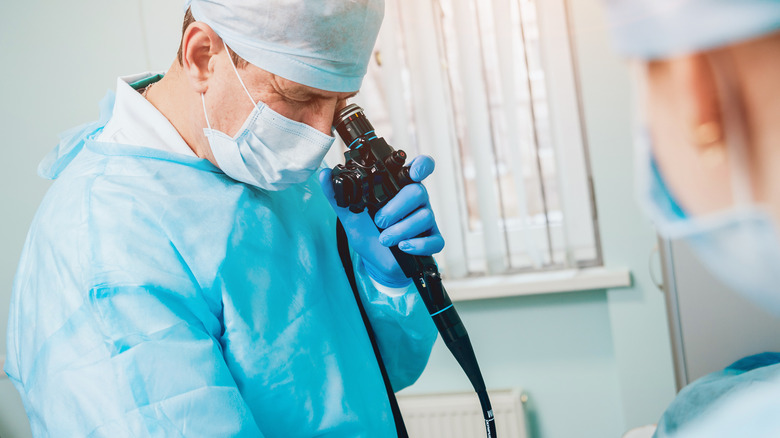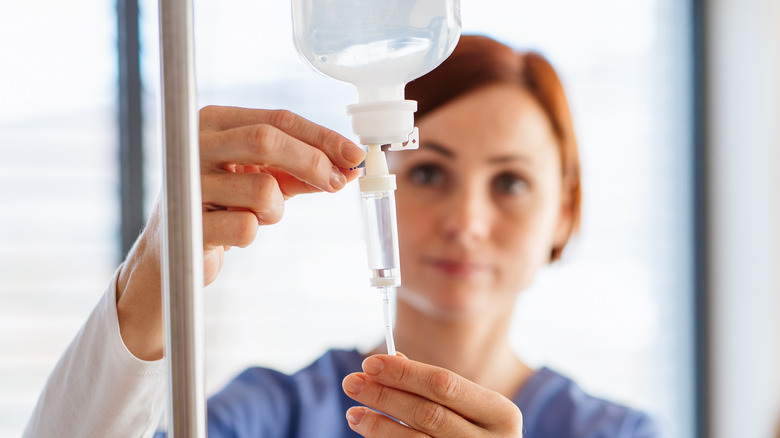This Is What Really Happens When You Get An Endoscopy
An endoscopy, also called an upper endoscopy, is a procedure conducted to examine the upper digestive tract. It can help doctors further investigate underlying causes of ongoing digestive symptoms like nausea, vomiting, and stomach aches (via the Mayo Clinic). Doctors can also collect samples for biopsy and treat some health issues on the spot, like removing polyps or stopping internal bleeding. The procedure is generally done in a hospital setting where the patient can lie down, have their vitals monitored, and receive sedation or anesthetics to relax. You should not expect to feel any pain, and most patients are totally unconscious under general anesthesia (via the American College of Gastroenterology).
Due to sedation, it's imperative to follow the prep instructions given by your doctor. Generally, the procedure will require a 4-8 hour fast beforehand to ensure the stomach is empty, and no liquids 2 hours prior to the procedure time. Certain medications may also need to be stopped days beforehand. Paying careful attention to your doctor's recommendations can help ensure your safety and prevent procedure delays or cancellations.
What to expect during an endoscopy
Now that you've prepped and your procedure date has arrived, you may wonder what's next. Once you arrive for your procedure, you'll be instructed to remove clothing and jewelry and change into a hospital gown. Nurses may start an IV drip and insert an anesthetic needle to prepare you for sedation. When it's time for the endoscopy, you'll be transported to the procedure room, equipped with monitors and tools to help your doctor perform the procedure.
Once you've been sedated, the endoscopy begins with the doctor inserting a long, flexible tube with a camera at the end, through the mouth and down the throat (via Mayo Clinic). Your doctor may also use gentle air pressure to assist with visibility. The camera can record the procedure and capture images for further investigation. Afterward, the tube is removed, and you'll be transported to recovery until you wake up from anesthesia. While the procedure may sound uncomfortable, your sedation should prevent any discomfort or pain, according to the American College of Gastroenterology. It's important to note that procedures using anesthesia require patients to arrange for a ride home from a family member.


